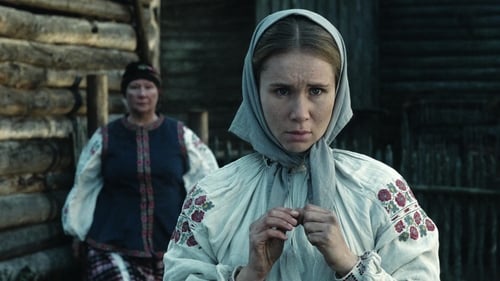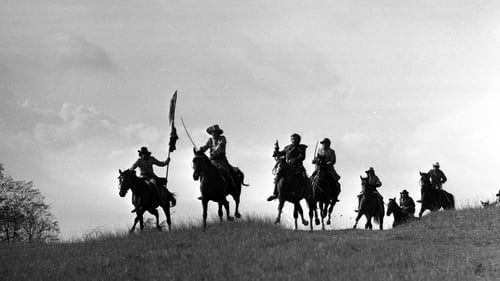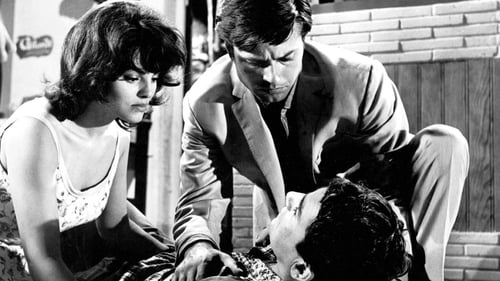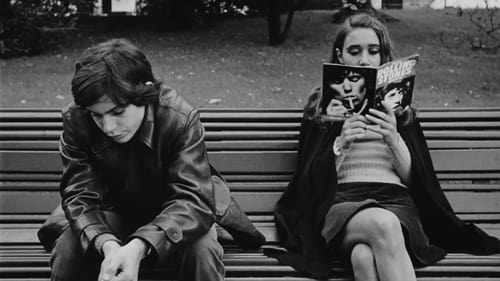Windy Ledge Farm (1932)
Genre :
Runtime : 17M
Director : Elizabeth Woodman Wright
Synopsis
Simple title cards link ten home movies shot at Maine's Windy Ledge Farm, at a neighbor's place, and visiting the Brownes in Chocorua, New Hampshire. We watch an uncle mow, farm hands haying with the White Mountains in the background, various young children playing, a lad holding his cat while carrying milk cans on a yoke, a pointer stalking a cat, the annual burning of brush and rubbish, and a montage of chores and relaxation on the farm. The last shot is of spring, a flag in the background. The films are sweet and straightforward, with clear black and white images.

A day in the life of Arnošt, a soldier staying in Josefov. A sense of desperation permeates the environment as well as the mind of the protagonist. It is sunday, and saturday left just a hangover. Days go by, nothing changes. A metaphor for the political situation in the Czech lands at a time where depicting a soldier as a drunk was considered out of place to say the least.

The first puppet kinescope in the world. It is based on the famous poetic comedy by William Shakespeare. Three worlds meet in this story: the noble world of three Athens couples, a common popular world of tradesmen amateur theatre and a fairy-tale happiness of magic creatures as elves and nymphs. The film is considered the most remarkable Jirí Trnka's work and a milestone in the history of the world animation.

The Japanese equivalent of penny dreadfuls glorifying Jesse James, A Diary of Chuji’s Travels gives a unique gloss to the tale of Chuji Kunisada, the legendary bakuto (or gambler, the precursors to modern-day yakuza). One of the two remaining segments of Ito’s original four-hour trilogy, it depicts Chuji’s attempt to save the geisha Oshina, a rebellion against the rigid social structure of Edo Japan. With socialist overtones, it’s a passionate artifact of early Japanese film.

This story unites the destinies of the landowners and their servants, and is considered to be one of the most complete portraits of the Russian life in the late XIX century. It takes place in Dry Valley, a village owned by the noble family of Khrushevs. The story tells about Natalia, a young and naive girl who serves in their country house. We see and experience her love, dedication to her masters, mysticism, exile, betrayal and faith, while the Dry Valley is falling to pieces, slowly but inevitably, as well as the lives of its inhabitants.

The film depicts the lives of veterans of the 1848 Hungarian Revolution in the American Civil War, based in part on an Ambrose Bierce story. The whole film was re-edited using his own method called "light editing" in order to make it resemble a damaged silent film from the late 1800s.

Adam and Eve are cast out of Eden. They discover that flowers can bring both joy and solace.

An escaped convict makes a remote gas station his safe haven. But soon the cunning, devious wife of the owner seeks a chance to use him to get what she wants.

Documentary - An impressive lineup of international stars puts on a spectacular "Symphony for the Spire" to kick off the world-famous Salisbury Arts Festival in 1991, held on the Salisbury Cathedral's West Green. Segments feature individual performances by Spanish tenor Placido Domingo, American soprano Jessye Norman and cellist Ofra Harnoy, as well as a special staging of Shakespeare's "Henry V" starring Kenneth Branagh and Charlton Heston. - Prince Charles, Kenneth Branagh, Plácido Domingo

Each home has a built in pool or water tank that lies partly inside, partly outside its’ walls… A continuous stream of spring water is piped right into a basin, so freshwater is always available. People rinse out pots in the tank and clean their freshly picked vegetables. If they simply pour the food scraps back in the water, they risk polluting the whole village supply. However, carp can scour out even the greasy or burnt pans. They do the washing up in Satoyama villages. This traditional arrangement is called the riverside method. It’s used all over Japan. Cleaned up by the carp, the tank water eventually rejoins the channel.

Plotless and wordless, beautifully edited shots of young (often naked or semi-naked) people in various positions, illustrating different emotions, actions and situations, underlined by rock music.

A survival, silent black & white film shot with a hand camera, a journey into Philippe Garrel's intimate family album featuring the two women who counted in his cinematographic life: Nico and Zouzou.

A documentary film directed by French Agnès Varda as an extension of the exhibition 'L'île et elle'. The installation 'Les veuves de Noirmoutier' (or 'The Widows of Noirmoutier') had various women filmed by Varda, young and old, who spoke about their widowhood and their residence on the island of Noirmoutier. The film is a montage of these meetings, which are both simple and melancholic.

National Theatre Live is an initiative operated by the Royal National Theatre in London, which broadcasts live via satellite, performances of their productions to movie theaters, cinemas and arts centres on the world. The second production, All's Well That Ends Well, showed at a total of around 300 screens, and today, the number of venues that show NT Live productions has grown to around 700.

In the 19th century London, a young girl falls for a famous womanizing criminal and they decide to get married. Her family strongly disapproves so her father "the king of thieves" gets the gangster arrested.

Angelo, a glass-blower from Murano, and Georgia Maglia, the pretty daughter of a fallen fascist magistrate, are chosen to be the stand-ins for the stars of a film version of "Romeo and Juliet" being shot on location in Venice and Verona. It is not long before they fall in love and their romance parallels that of Shakespeare's timeless heroes. Indeed their union is threatened by the schemings of Raffaele, the Maglia family's dubious tout...

John Livingston is a rich mama's-boy, who owns a blooded dog named Paul. Paul meets Maggie Mutt, and Paul, being a pedigree canine and somewhat of a cad, lures trusting Maggie to the barn to have his way. He then departs for his palatial doghouse at the Livingston estate. Meanwhile Maggie is broken-hearted and also finds that she is in a "family way", and gives birth to a pup she names Hank. Maggie tells Hank to find his "human ", and departs the scene. Hank goes to the park, meets a "human" named Mary Kelly, who is a homeless waif and sweetheart of poverty, and the two adopt each other. Later on in the park Paul comes strolling along with his 'human', John. A child falls into the lake and Paul and Hank team up to save her.

Promotional film for "AEG".

A young couple skip school to spend time together in a mansion.

Eisenstein shot 50 hours of footage on location in Mexico in 1931 and 32 for what would have become ¡Que viva México!, but was not able to finish the film. Following two wildly different reconstruction attempts in 1939 (Marie Seton's 'Time in the Sun') and 1979 (Grigori Alexandrov's '¡Que viva México!') Kovalov has here compiled another hypothetical version of what Eisenstein's film might have been.









